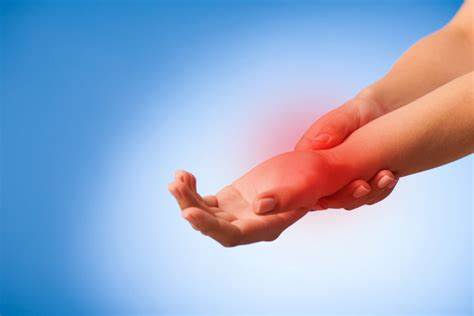Complex Regional Pain Syndrome.
- Más allá del dolor

- Oct 24, 2021
- 3 min read
Complex regional pain syndrome (CRPS), also called reflex sympathetic dystrophy syndrome, is a chronic pain condition in which high levels of nerve impulses are sent to an affected site. Experts believe that CRPS happens because of dysfunction in the central or peripheral nervous systems.

CRPS is most common in people ages 20-35. It’s rare in children and seniors. It affects women more often than men.
There is no cure for CRPS.What Causes Complex Regional Pain Syndrome? CRPS most likely does not have a single cause; rather, it results from multiple causes that produce similar symptoms. Some theories suggest that pain receptors in the affected part of the body become responsive to catecholamines, a group of nervous system messengers. In cases of injury-related CRPS, the syndrome may be caused by a triggering of the immune response, which may lead to the inflammatory symptoms of redness, warmth, and swelling in the affected area. For this reason, it is believed that CRPS may represent a disruption of the healing process. It most often appears after an injury. But it also can be triggered by an infection, heart attack, stroke, cancer, neck problems, or pressure on a nerve.
What Are the Symptoms of Complex Regional Pain Syndrome? The symptoms of CRPS vary in their severity and length. One symptom of CRPS is continuous, intense pain that gets worse rather than better over time. If CRPS happens after an injury, it may seem out of proportion to the seriousness of the injury. Even in cases involving an injury only to a finger or toe, pain can spread to include the entire arm or leg. In some cases, pain can even travel to the opposite extremity. Other symptoms of CRPS include:
"Burning" pain
Sensitivity to touch or cold
Swelling and stiffness in affected joints
Motor disability, with decreased ability to move the affected body part
Changes in nail and hair growth pattern; there may be rapid hair growth or no hair growth.
Skin changes. CRPS can involve changes in skin temperature -- skin on one extremity can feel warmer or cooler compared to the opposite extremity. Skin color may become blotchy, pale, purple or red. The texture of skin also can change, becoming shiny and thin. People with CRPS may have skin that sometimes is excessively sweaty.
CRPS may be heightened by emotional stress. The effects of complex regional pain syndrome can grow more serious with time. So the sooner you find out if you have it, the better. How Is Complex Regional Pain Syndrome Diagnosed? There is no specific diagnostic test for CRPS, but some testing can rule out other conditions. Triple-phase bone scans can be used to identify changes in the bone and in blood circulation. Some health care providers may apply a stimulus (for example, heat, touch, cold) to determine whether there is pain in a specific area.
Making a firm diagnosis of CRPS may be difficult early in the course of the disorder when symptoms are few or mild. CRPS is diagnosed primarily through observation of the following symptoms:
The presence of an initial injury
A higher-than-expected amount of pain from an injury
A change in appearance of an affected area
No other cause of pain or altered appearance
How Is Complex Regional Pain Syndrome Treated? Because there is no cure for CRPS, the goal of treatment is to relieve painful symptoms associated with the disorder. Therapies used include psychotherapy, physical therapy, and drug treatment, such as topical analgesics, narcotics, corticosteroids, osteoporosis medication, antidepressants, osteoporosis medicines, and antiseizure drugs.
Other treatments include:
Sympathetic nerve blocks: These blocks, which are done in a variety of ways, can provide significant pain relief for some people. One kind of block involves placing an anesthetic next to the spine to directly block the sympathetic nerves.
Surgical sympathectomy: This controversial technique destroys the nerves involved in CRPS. Some experts believe it has a favorable outcome, while others feel it makes CRPS worse. The technique should be considered only for people whose pain is dramatically but temporarily relieved by selective sympathetic blocks.
Intrathecal drug pumps: Pumps and implanted catheters are used to send pain-relieving medication into the spinal fluid.
Spinal cord stimulation: This technique, in which electrodes are placed next to the spinal cord, offers relief for many people with the condition.
What Is Recovery Like? If your treatment starts within a few months after the symptoms appear, there's a good chance your pain will ease up or go away. Children and teenagers generally have the best luck. As you work on getting better, these steps may help:
Keep up your usual daily routine as much as you can.
Get plenty of rest.
Don't try to do more than your strength can handle.
Look to your family and friends for support.
Speaking of family and friends, some of them may have a hard time believing how much pain you're in. That's a common problem with this illness. Share information about complex regional pain syndrome so they can better understand what you're dealing with.
Medically Reviewed by Brunilda Nazario, MD on August 26, 2021






Comments